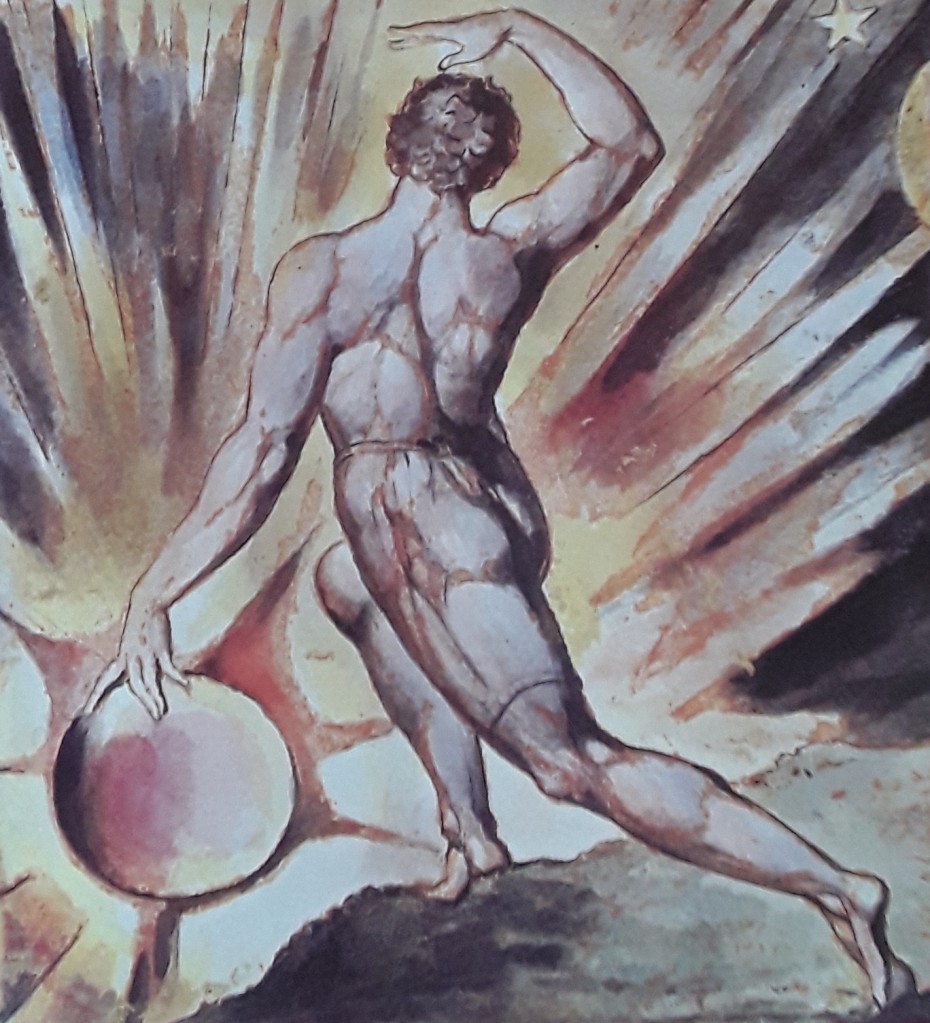For millennia art history has overestimated the effectiveness of the visual imagination. What we have truly admired most in art is observation of the real world not imagination. Observation is not as easy or boring as art historians suppose. The stories we tell ourselves, our beliefs get in the way of seeing the world as it is. Anyone who has drawn consistently from nature will tell you how difficult it is to record the two dimensional shapes required to tell us about the three dimensional world. It takes a lot of practice and constant vigilance not to be knocked off course by what one thinks one knows. Our perceptions need to be perpetually questioned.
Most good artists can give us enough to persuade us of what they have in mind but it takes the genius of a Rembrandt to see what is going on out there. And this he did by observation not from imagination as the scholars suppose.

We know what Blake wanted to say but if a dancer produced this gesture at the climax of his piece he would be greeted with uncontrollable laughter, such is the gap between ambition and performance from imagination.
I proved this way back in 1974. That proof was endorsed by Prof.E.H.Gombrich in my Burlington article of Feb.1977 but scholarship has chosen to ignore it and the many proofs of the same I have piled on since. The truth is that present Rembrandt scholarship is entirely out of touch with the historical opinion of those who knew Rembrandt or heard of his behaviour from his students. Scholars follow their inherited bias in favour of imagination have turned Rembrandt upside-down: instead of the artist who “would not attempt a single brushstroke without a living model before his eyes”(Houbraken) we now have a Rembrandt who is assumed to have imagined the bulk of his drawings and an artist whose development has been forced into a most inappropriate mould. This has led to a sequence of further absurdities.
Because of the high standing Rembrandt enjoys among artists today these errors shake the foundations of our art. It is natural to trust the experts but we must remember the experts are human and for humans to contradict the elders of their tribe endangers their life. I can vouch for this because though I am not a member of the tribe of art historians (but a sculptor) my life has been severely disrupted by them. Instead of leading the renewal of Rembrandt scholarship from the centre: I live in a paradise in Tuscany in the hope of attracting students to this inevitable but at the moment, unrewarding task of revising Rembrandt. (see nigelkonstam.com or saveRembrandt.org.uk for details)
All my discoveries were made by asking the right questions, like – how did Vermeer see himself in back view; the professionals don’t seem to think it necessary to see what you are painting, so never ask this question.